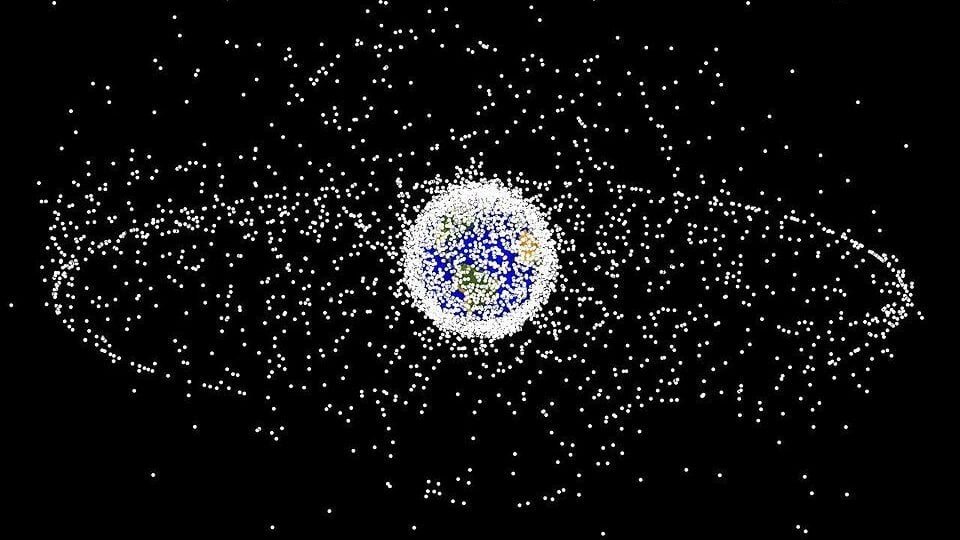
The orbital population of active satellites and dangerous debris continues to grow by leaps and bounds. (NASA)
AMOS 2022 — Startup Slingshot Aerospace is putting its money where its corporate mouth is in proselytizing for an industry-led approach to managing space traffic — by creating a software tool that it says can help satellite operators dodge other satellites or dangerous space debris across orbits, and then giving it away for free.
“Our entire mission is to build a simulation analytics company capable of hosting that digital infrastructure necessary to keep from having collisions on orbit. Mainly, we believe that all the orbital domains, not one in particular, need to be approached holistically,” co-founder Melanie Stricklan told Breaking Defense in an interview Sept. 26 in the margins of the Advanced Maui Optical and Space Surveillance Technologies Conference in Maui.
Founded in 2017, Slingshot’s specialty is creating simulations of the space environment, including development of what the company calls a “digital space twin,” that in March garnered the firm a $24 million contract through the Space Force’s innovation hub SpaceWERX. The contract includes use of the digital twin environment and training via the Slingshot Laboratory.
“The Space Force is our biggest customer,” she said, noting that many of the firm’s employees are, like herself, retired Air Force personnel with experience in monitoring the heavens.
Sticklan noted that with the company’s Aug. 3 acquisition of British space data analytics company Seradata and the space situational awareness (SSA) business (read telescopes) of air and missile defense firm Numerica, the company’s work with government agencies has expanded. For example, the Numerica business unit has contracts with NASA and the Commerce Department’s Office of Space Commerce, which is preparing to take over the SSA mission from Space Command.
However, company officials told Breaking Defense, Slingshot sees its primary mission as providing space safety and sustainability for all.
“We believe that space needs to be in a more sustainable state — that spaceflight safety is critical to connecting the world and making sure that we continue to have space as a portal of progress and knowledge. And that’s at risk today,” Stricklen stressed.
While low Earth orbit today is the orbital regime with the fastest growing population, in reality the problem of space congestion and the increasing population of space debris is a cross-orbit phenomena — eventually even out to cislunar orbit between the Earth and the Moon, she explained. This means that multiple types of sensors have to be deployed, greater accuracy in tracking space objects is required and agreed traffic management practices have to be developed for all different orbits.
“From my perspective, having done this for years within the United States Air Force before I retired, I learned very quickly that this has to be a multi-domain, multi-phenomenology capability if we want to solve [the problem],” she said.
Further, Sticklan worries, because space is a “non-jurisdicted domain,” with not one government in charge of protecting it, it is in danger of becoming yet another example of the tragedy of the commons — that is, so congested and polluted that the world loses the benefits of its use. And because industry has in many ways surpassed governments in not just the use of space, but in developing technologies that can help keep spacecraft safe, she added, Slingshot Aerospace believes that the onus is on the private sector to take measures to help develop a sustainable space traffic approach.
“I think it’s imperative the industry step forward,” Stricklan said.
That is the impetus behind the company’s Sept. 13 release of its space traffic management tool, Slingshot Beacon, for free. According the press release, The tool helps firms:
- Visualize the current and future state of satellites in a customizable dashboard
- Analyze risk using more accurate models to cut through the noise of irrelevant data
- Enable coordination based on the same data with seamless chat and file sharing
- Guide decision stages for maneuvers to eliminate uncertainty
A key aspect of the Beacon system is that it allows users to determine how close they consider too close for their satellite to come to another satellite or piece of space junk, and only provides warnings when that threshold is about to be breached, Stricklan said.
“That’s what Slingshot Beacon does — it gives them the ability to control their threshold. And it doesn’t take that stick away from them. It’s a decentralized collision avoidance tool,” she stressed.






















